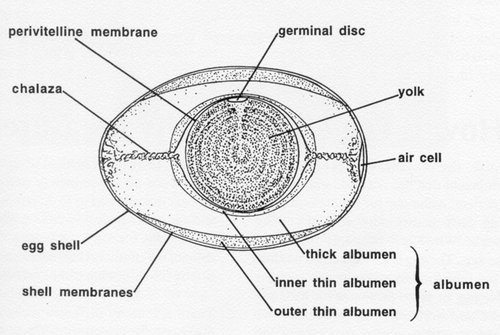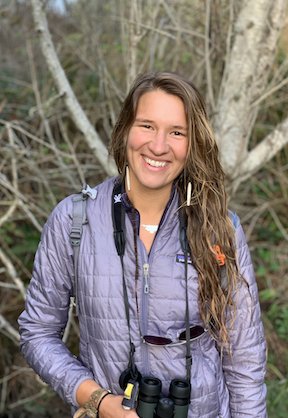Hanover Bald Eagle Blog # 6 - 2021
In partnership with Pennsylvania Game Commission and Comcast Business .
AT 3:57 PM ON TUESDAY, THE 2ND OF FEBRUARY, THE FIRST EGG WAS LAID. THE SECOND WAS LAID ON FRIDAY AT 5:14 PM. THE HANOVER EAGLES ARE OFFICIALLY PARENTING!
One egg weighs as much as a deck of cards.
Although watching the mother eagle incubate in the snow is understandably concerning, these experienced adults have contended with much worse. If snowstorms were detrimental to the eggs, the eagles would have to wait until later in the spring to lay. Given the consistency of the Hanover female’s lay month over the past years, and the scientific literature on bald eagle breeding phenology, we can rest assured that the early arrival of the eggs is still in the safe-zone! Stay tuned for next week’s blog to learn more about the role of temperature in the incubation process.
Although a third egg is possible, the clutch size is more likely to remain two. A clutch refers to the entire set of eggs laid by one female.
The laying interval between eggs differs depending on species; as a general rule of thumb, the larger the bird the longer the interval. This is because producing the necessary material for a healthy egg takes time, and the larger the egg the more material is required. Bald eagles lay larger eggs than say, an American kestrel or a chickadee, and their interval is indeed longer. Kestrels lay 4-5 eggs, one every other day. Black-capped chickadees lay an egg per day, ending with a clutch size anywhere from 1 to 13 eggs!
Bald eagles lay slightly different sized eggs depending on where they live, a trend correlated with the body size of adults. Bald eagles that live in northern altitudes such as Alaska are larger than those living in, say, Florida. Therefore, eggs laid by females in Alaska are also bigger than those laid in Florida.
Female birds are “busy and stressed,” prior to laying their eggs, according to Tim Birkhead, author of The Perfect Thing (for a fascinating read on the evolution of bird eggs, I recommend this book). To lay healthy eggs, the female needs to maintain a good body condition over the winter, and 24 hours prior to laying, she needs to ingest enough calcium to produce the eggshells. The thickness of eggshells depends on the species; those that lay large clutches or large eggs need more calcium. The blue tit, a small Eurasian passerine, sometimes lays more than 16 eggs, and in Birkhead’s words, the females must find “more calcium for their eggshells than is present in their entire skeleton.” Researchers have found that female birds not only know when it’s time to start scarfing calcium, they can also tell the difference between calcium-poor and calcium-rich foods.

Now that the Hanover pair is officially incubating, we will see them roll the egg every hour or two. This behavior ensures that the embryo doesn’t get stuck to the inside of the egg shell, which would be a death sentence for the developing chick. The rolling is also thought to aid the embryo in accessing the protein and water that is stored in the egg. This brings us to a question rarely asked outside of the kitchen: What actually makes up the inside of the egg?
The albumen, a fancy word for egg white, is a colorless, intriguing substance made up of four membranes. The main function of the albumen is to provide water and protein to the embryo, but it also cushions the embryo from physical damage and protects the embryo from harmful microbes like bacteria, viruses, yeasts, and fungi. If you have ever come across a rotten egg, you’ve probably noticed the smell, which results from the byproduct of microbial activity called hydrogen sulphide. When all goes well, the albumen protects against such invasions.
Another important part of the egg is the chalazae (“shell-uh-zee”), which holds the yolk in the center of the egg.
The yolk of the egg holds fat and protein. Yolk size depends on whether the hatchling will be altricial or precocial. Altricial, a word coming from the Latin root “to nourish,” refers to hatchlings that are virtually unable to care for themselves when they hatch. They must be fed and kept warm by their parents, their mobility is limited, and they can’t open their eyes right away. On the opposite end of the spectrum are precocial young, coming from the same Latin root as the word “precocious.” These hatchlings are born with their eyes open, can mostly feed themselves, keep warm, and walk or swim soon after hatching. Precocial species lay eggs with relatively large egg yolks (40% of the egg), whereas altricial species have smaller yolks (25%). This is because altricial hatchlings have more time to develop outside of the egg, and can afford to have less stored energy within the egg. Bald eagles and many other raptor species are “semi-altricial.” They are born with open eyes and downy feathers, yet they are immobile and dependent on their parents for food. Stay tuned to learn more about the trade-offs associated with altricial versus precocial young when we discuss hatching later in the season.

See above, a cross section of a bird egg
The heartbeat of the embryo in the first egg began beating on the same day that the second egg appeared. The heartbeat of that embryo begins today! Congratulations to the Hanover pair for bringing two beautiful white elliptical bundles of potential into the world.
Answers to several questions asked this week:
1) Both male and female bald eagles develop brood patches, though the female’s is typically more developed. More on the function of the brood patch in next week’s incubation blog!
2) Bald eagles lay two eggs on average, however clutches of three are not impossible. Even clutches of four have been documented, though rarely.
3) It is difficult to tell if another egg will be laid by behavior alone. Feeding on high-calcium prey items could be one clue for non-raptor species, but since raptors feed on other animals, it’s more difficult to tell if they are feeding on calcium in higher amounts. Other potential behavioral clues include the female chirping softly, or receiving a heightened number of food gifts from the male.
Sources
The Cornell Lab of Ornithology. (2021). Black-capped Chickadee. Birds of the World.
https://birdsoftheworld.org/bow/species/bkcchi/cur/breeding
The Cornell Lab of Ornithology. (2020, June 12). American Kestrel Cam Timeline. All About Birds.
https://www.allaboutbirds.org/cams/american-kestrel-cam-timeline/#:~:text=American%20Kestrels%20typically%20lay%204%E2%80%935%20eggs%20per%20clutch%2C%20laying,one%20egg%20every%20other%20day
Journey North (2019). Life Cycle Q&A about Bald Eagles with Peter Nye.
https://journeynorth.org/tm/eagle/facts_life_cycle.html#:~:text=in%20a%20lifetime%3F-,A.,laying%20as%20she%20gets%20older.
Raptor Resource Project (2020, January 29). How long does it take a bald eagle to lay an egg?
https://www.raptorresource.org/2020/01/29/how-long-does-it-take-a-bald-eagle-to-lay-an-egg/
Poultry Hub. (2021). The avian egg.
http://www.poultryhub.org/physiology/the-avian-egg/
ATTENTION HANOVER EAGLE VIEWERS - We recognize that over the years this bald eagle pair has been named by the public and is commonly referred to as "Freedom" and "Liberty". While we understand that naming the eagles helps connect and distinguish the female from the male eagle, naming the pair introduces an element of domesticity to wild animals. In order to respect the eagles and focus on their natural history, we will refer to the female and male as such as per recommendations of the Pennsylvania Game Commission.



RETURN TO HANOVER BALD EAGLE BLOGS
WATCH THE HANOVER BALD EAGLE LIVE CAMS
For over 20 years, HDOnTap has provided live streaming solutions to resorts, amusement parks, wildlife refuges and more. In addition to maintaining a network of over 400 live webcams, HDOnTap specializes in design and installation of remote, off-grid and otherwise challenging live streaming solutions. Contact press@hdontap.com for all media needs, including images and recordings.